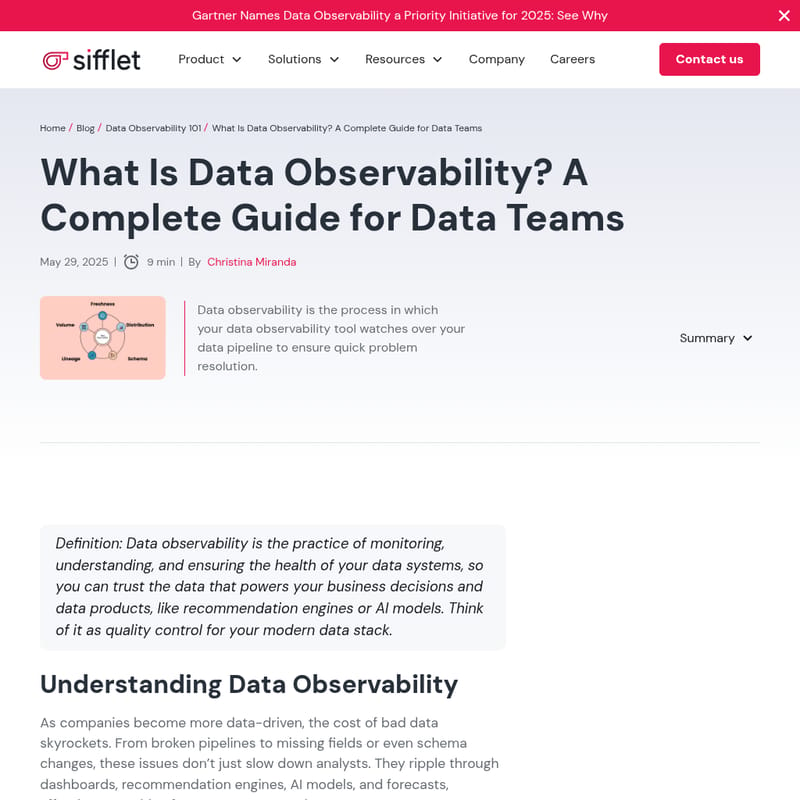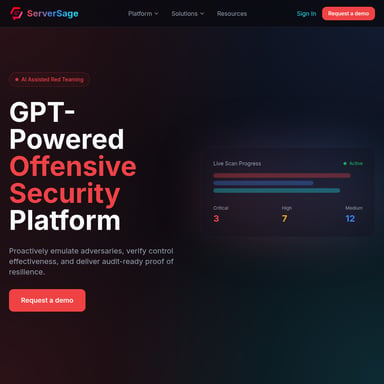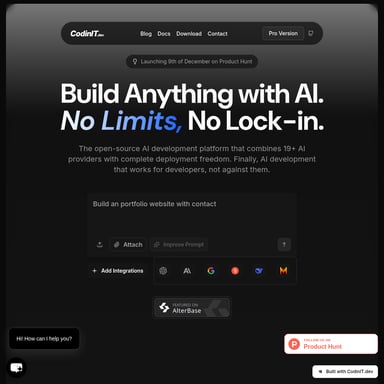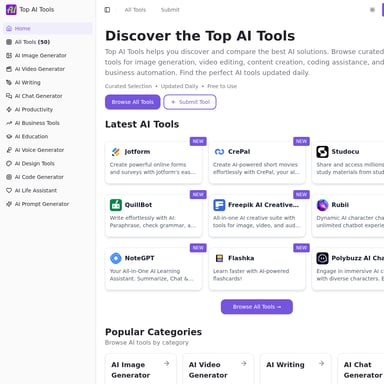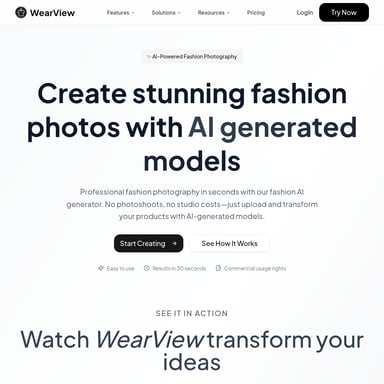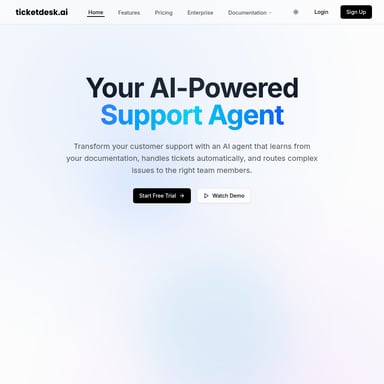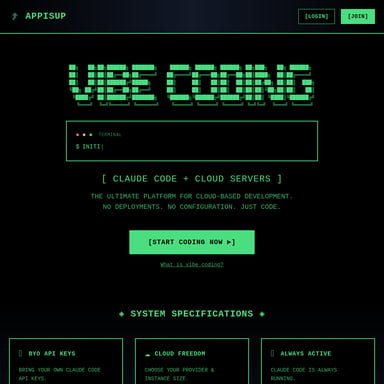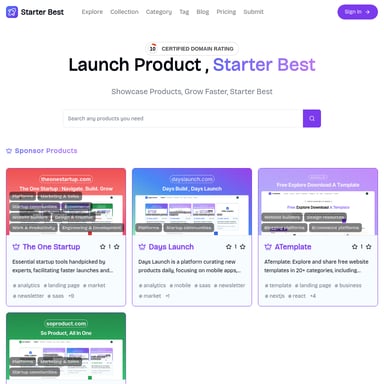Sifflet Data Observability
Gartner Names Data Observability a Priority Initiative for 2025
Data observability ensures data reliability by monitoring pipelines, detecting anomalies, and mapping business impact, thus accelerating resolution. Sifflet offers a comprehensive solution for companies.
2025-07-24
11.4K
Sifflet Data Observability Product Information
Gartner Names Data Observability a Priority Initiative for 2025
What Is Data Observability?
Data observability is the practice of monitoring, understanding, and ensuring the health of your data systems. This process ensures that businesses can trust the data that powers their decision-making processes, including recommendation engines and AI models. It acts as quality control for your modern data stack, preventing costly issues that could arise from broken data pipelines, missing fields, or schema changes.
The Importance of Data Observability
As businesses become more data-driven, the cost of bad data increases. From broken pipelines to missing or incorrect data, issues within the data pipeline can cause serious repercussions, such as flawed forecasts, inaccurate AI models, and unreliable customer experiences. Data observability helps to detect problems early, identify their root causes, and prevent them from impacting business outcomes.
Key Features of Data Observability
-
Metrics: These are the internal health indicators of your data, including things like data distributions and value patterns. They help identify subtle data quality changes that could impact your analytics and AI models.
-
Metadata: Contextual data such as column definitions, data types, update schedules, and business purposes. Without this metadata, identifying what data is important and why is impossible.
-
Lineage: The map of how data flows through your system, from source to final consumption. Lineage allows you to understand the full impact of any data failure.
-
Logs: The record of every interaction with the data, including pipeline runs, transformations, queries, and user actions. Logs are critical for root cause analysis.
How to Use Data Observability
Data observability is not just about monitoring the freshness of your data; it's about understanding why a failure matters. It's crucial to connect technical signals like schema changes to their business impact, such as whether these changes could compromise your executive dashboard or lead to faulty AI models.
Use Case: Preventing Data Failures During Critical Events
Imagine managing a retail chain during Black Friday, with demand forecasting driving inventory decisions. Without data observability, data discrepancies, like sales data not syncing correctly, could cause major issues. With data observability tools like Sifflet, such failures are detected early, allowing you to fix issues in real-time, thus preventing costly mistakes.
FAQ
1. What’s the difference between data observability and data monitoring? Data monitoring is about tracking pipeline success or failure, while data observability connects technical issues to business impact. It helps prioritize which data issues matter for decision-making.
2. How does data observability improve decision-making? It provides the context that makes monitoring actionable by mapping data failures to business processes, ensuring that teams act on what actually impacts outcomes.
3. Who benefits from data observability? Data engineers, analytics teams, finance, and executives all benefit from improved data reliability. It ensures that decisions are based on trustworthy data.
Conclusion
Data observability is critical for businesses that rely on data to drive operations and decision-making. With tools like Sifflet, businesses can ensure data reliability, prevent costly errors, and improve overall data health.
